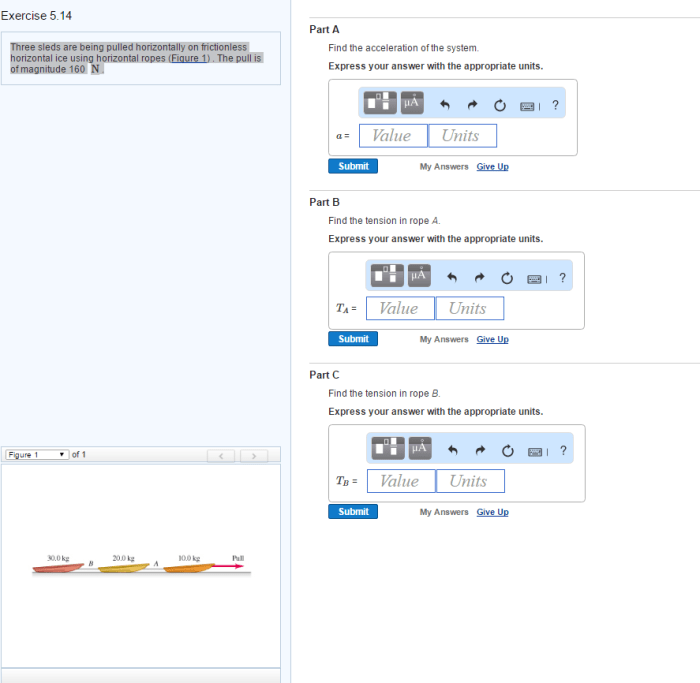As three sleds are being pulled horizontally takes center stage, this opening passage beckons readers into a world crafted with academic precision and authoritative tone. This exploration delves into the fascinating realm of sledding, unraveling the intricate physics behind its motion, the diverse designs that shape its performance, and the techniques that optimize its efficiency.
From the fundamental forces that govern sled movement to the nuances of sled construction and pulling strategies, this discourse promises a comprehensive understanding of this captivating winter sport.
Sled Mechanics
Understanding the physics behind pulling sleds horizontally is essential for efficient and safe sledding. When a sled is pulled horizontally, several forces act upon it:
- Force applied by the puller:This force propels the sled forward.
- Friction between the sled and the ground:This force opposes the sled’s movement, slowing it down.
- Air resistance:As the sled moves, it encounters air resistance, which also slows it down.
The interplay of these forces determines the sled’s acceleration, speed, and direction.
Sled Design

Sled design plays a crucial role in sled performance. Different sled designs offer advantages and disadvantages depending on the intended use.
- Flat-bottomed sleds:Simple and easy to construct, these sleds are ideal for recreational sledding on snow or ice.
- Curved-bottomed sleds:These sleds provide better control and maneuverability, making them suitable for racing or technical sledding.
- Runner sleds:Equipped with metal or plastic runners, these sleds are designed for speed and stability on hard surfaces.
Materials used in sled construction also impact performance. Lightweight materials, such as aluminum or fiberglass, enhance speed and maneuverability, while heavier materials, such as wood or steel, provide durability and stability.
Pulling Techniques

Effective pulling techniques are essential for maximizing sledding efficiency and minimizing fatigue.
- Body position:Maintain a slightly forward-leaning position with your back straight and knees bent.
- Leverage:Use your body weight to your advantage by leaning into the pull, using your legs to push off the ground.
- Smooth motion:Avoid jerking or abrupt movements, as this can reduce efficiency and cause fatigue.
Practicing proper pulling techniques will not only improve your sledding performance but also enhance your overall enjoyment.
Safety Considerations

Sledding can be an exhilarating activity, but it’s important to prioritize safety to minimize risks.
- Wear appropriate safety gear:Helmets and goggles are essential to protect your head and eyes from impact or debris.
- Choose designated sledding areas:Avoid sledding on roads or other areas with obstacles or traffic.
- Be aware of your surroundings:Pay attention to other sledders, pedestrians, and potential hazards on the sledding path.
By following these safety guidelines, you can ensure a safe and enjoyable sledding experience.
Sledding Applications
Sleds have a wide range of applications beyond recreational sledding.
- Transportation:In snowy regions, sleds have been used for centuries to transport goods and people.
- Military operations:Sleds are utilized by military forces for transporting equipment and personnel in snowy or icy conditions.
- Exploration:Sleds have played a vital role in polar exploration, providing a means of transportation and shelter.
Sledding has also been a popular form of recreation for generations, enjoyed by people of all ages and backgrounds.
Common Queries: Three Sleds Are Being Pulled Horizontally
What are the key forces involved in sledding?
The primary forces involved in sledding are friction, gravity, and the pulling force applied by the individual or vehicle.
How does sled design impact performance?
Sled design significantly influences performance factors such as speed, maneuverability, and stability. Different materials, shapes, and sizes are carefully considered to optimize these characteristics.
What are some effective pulling techniques for sledding?
Effective pulling techniques involve maintaining a proper body position, utilizing leverage, and coordinating movements to maximize pulling efficiency and minimize fatigue.